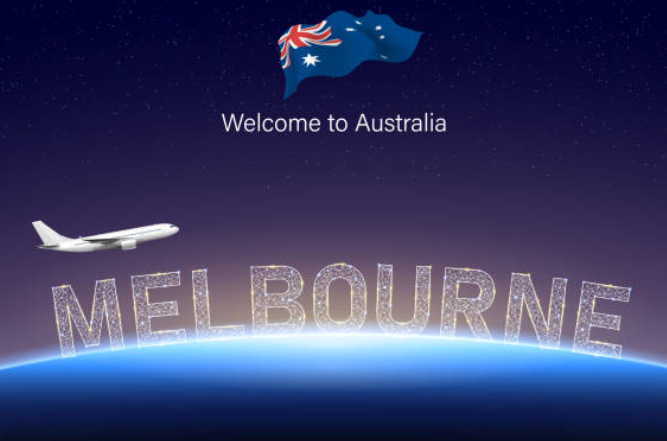Top Nursing Jobs in Australia with Visa Sponsorship in 2025
Top Nursing Jobs in Australia with Visa Sponsorship in 2025, Australia’s healthcare sector is booming, and nursing jobs in Australia with visa sponsorship are opening doors for international talent in 2025.
With competitive salaries, a high quality of life, and a growing demand for skilled nurses, it’s no wonder thousands of professionals worldwide are eyeing this opportunity. But finding the right role, and going through the visa process, can be stressful. Where do you start, and how do you stand out?
This guide has all you need to know, whether you’re a registered nurse, midwife, or aged care specialist, you’ll discover the best nursing jobs in Australia with visa sponsorship, how to secure them, and what it takes to live in Australia.
Why Nursing Jobs in Australia Are in Demand
Australia’s healthcare system is world-class, but it’s facing a critical challenge: a shortage of nurses. According to the Australian Government’s Health Workforce Australia projections, the country could need over 100,000 additional nurses by 2030 due to an aging population and retiring workforce.
This gap has made nursing jobs in Australia with visa sponsorship a golden ticket for international candidates.
The Interesting part? Nurses in Australia earn between AUD 70,000 and AUD 100,000 annually, depending on experience and specialization,sometimes more in rural or critical care roles.
Add in benefits like universal healthcare, paid leave, and a laid-back lifestyle, and it’s clear why this is a top destination. For employers, sponsoring international nurses via visas like the 482 or 186 is a smart investment, fueling demand and making these roles highly competitive.
Top Nursing Roles with Visa Sponsorship
Not all nursing jobs are equal when it comes to sponsorship. Here are the top roles international nurses can target in Australia, along with what you need to know:
Registered Nurse (RN)
Demand: High across hospitals, clinics, and community care.
Employers: Public systems (e.g., NSW Health), private giants like Ramsay Health Care.
Regions: Sydney, Melbourne, and rural areas with extra incentives.
Qualifications: Bachelor of Nursing, registration with AHPRA (Australian Health Practitioner Regulation Agency).
Midwifery
Demand: Rising with birth rates and maternal care needs.
Employers: Maternity wards, private birthing centers.
Qualifications: Postgraduate midwifery certification, AHPRA eligibility.
Aged Care Nurse
Demand: Skyrocketing due to Australia’s aging population.
Employers: Bupa, Opal HealthCare, residential facilities.
Regions: High need in regional areas with sponsorship bonuses.
Critical Care Nurse
Demand: ICUs and emergency departments need specialists.
Employers: Major hospitals like Royal Melbourne Hospital.
Qualifications: Experience in ICU/ED, advanced certifications.
These roles often come with visa sponsorship because employers struggle to fill them locally. Rural positions, in particular, offer higher salaries and faster sponsorship processing, something to consider if you’re flexible on location.
Visa Sponsorship Explained
Securing nursing jobs in Australia with visa sponsorship means understanding the visa options. Here’s a breakdown:
Temporary Skill Shortage (TSS) Visa – Subclass 482
Duration: Up to 4 years.
Process: Employer nominates you; you need a skills assessment (e.g., via ANMAC, Australian Nursing and Midwifery Accreditation Council).
Cost: Employers cover sponsorship fees (around AUD 3,000), but you may pay for health checks or visas (AUD 1,500+).
Employer Nomination Scheme (ENS) Visa – Subclass 186
Duration: Permanent residency.
Process: Requires 2–3 years of experience in Australia (often a step up from 482).
Benefit: Long-term stability and a path to citizenship.
Steps to Get Sponsored:
- Pass English proficiency (IELTS 7 or OET B).
- Get your qualifications assessed by ANMAC.
- Apply to AHPRA for registration.
- Find an employer willing to sponsor (more on this below).
Visa sponsorship isn’t automatic, it’s tied to employer needs, but nursing’s inclusion on Australia’s Skilled Occupation List makes it a priority profession, boosting your odds.
How to Find Nursing Jobs in Australia with Visa Sponsorship
Landing these roles takes strategy. Here’s where and how to look:
Job Platforms:
- Seek.com.au: Australia’s top job board, filter for “visa sponsorship.”
- Indeed Australia: Search “nursing jobs visa sponsorship.”
- Australian Government Job Portal (jobs.gov.au): Public sector listings.
- Healthcare Australia: A recruitment agency specializing in sponsored roles.
How to increase your chances of getting nursing jobs with visa sponsorships in Australia
Tailor Your Resume: Use Australian terms (e.g., “registered nurse” not “staff nurse”), highlight visa eligibility.
Network: Join forums like All Nurses or LinkedIn groups for Australian healthcare pros.
Contact Employers Directly: Big players like Healthscope or St Vincent’s Health often sponsor but don’t always advertise it.
Rural Advantage: Regional employers (e.g., in Queensland or Tasmania) are more likely to sponsor due to local shortages. Look for “Regional Sponsored Migration Scheme” opportunities.
Persistence pays off, many nurses secure offers within 3–6 months of active searching.
Comparison of Top Employers Offering Sponsorship
Here’s a snapshot of five major employers known for sponsoring nurses, based on industry trends and job listings:
| mployer | Sponsorship Type | Salary Range (AUD) | Key Regions | Benefits |
|---|---|---|---|---|
| Ramsay Health Care | 482, 186 | 75,000–95,000 | Sydney, Brisbane | Training, relocation help |
| Healthscope | 482 | 70,000–90,000 | Melbourne, Perth | Flexible shifts |
| NSW Health | 482, 186 | 80,000–100,000 | Rural NSW, Sydney | Pension, rural incentives |
| Bupa Aged Care | 482 | 65,000–85,000 | Regional areas | Career progression |
| Royal Melbourne Hosp. | 482, 186 | 85,000–110,000 | Melbourne | Research opportunities |
Research opportunities
These employers regularly appear in visa sponsorship nursing jobs in Australia, especially for RNs and critical care roles. Salaries vary by experience and location, rural gigs often pay more to attract talent.
Success Tips for International Nurses
Ready to make move? Here’s how to shine:
Master English Proficiency: IELTS 7 (or OET B) is non-negotiable for AHPRA registration. Practice early, many stumble here.
Adapt to Australian Standards: Familiarize yourself with local protocols (e.g., medication names differ from the US or UK).
Highlight Relevant Experience: Employers love ICU, aged care, or emergency skills, showcase them.
Prepare for Relocation: Research cost of living (e.g., Sydney’s high rent vs. rural affordability), get health insurance sorted.
Stay Patient: Visa processing can take 3–12 months, use the time to upskill or connect with recruiters.
Nurses from countries like the Philippines, India, and the UK often succeed by aligning their credentials with Australian requirements. You can too.
Australia’s nursing jobs with visa sponsorship offer a life-changing opportunity, high pay, career growth, and a chance to call one of the world’s most livable countries home. Whether you’re drawn to bustling Sydney hospitals or quiet rural clinics, there’s a role waiting. The key? Start now, assess your skills, polish your resume, and explore the job listings and visa options below. Your Australian nursing career is closer than you think!




